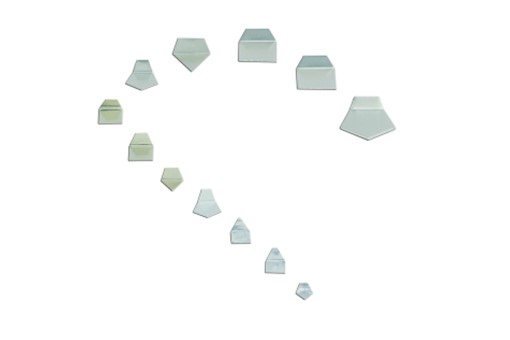In the Penza region, the results of studies of 20 samples for infectious avian laryngotracheitis were obtained

For 5 months of 2022, specialists of the Department of State Veterinary Supervision for the Penza Region of the Office of the ROSSELKHOZNADZOR for the Republic of Mordovia and the Penza Region, as part of epizootological monitoring, sent 20 samples for infectious avian laryngotracheitis to the Saratov MVL to study.
Of the 20 samples, 3 positive samples were identified with a low level of post-vaccination antibodies, which indicates a low percentage of post-vaccination immunity. The Department of Rosselkhoznadzor informed the enterprise about the identification of positive samples for taking the necessary measures.
Management reminds that infectious laryngotracheitis is a viral disease. Chickens, peacocks, pheasants and some types of ornamental birds are susceptible to the disease, more often manifested in young chickens aged 60 to 100 days. The virus can also infect humans. This happens to people who have been working with vaccine material for a long time or are forced to come into contact with highly aggressive strains (workers in biofactories and laboratories). With poultry products - MEAT, eggs, feathers - a person cannot become infected. In chickens, the disease is transmitted "from beak to beak", the incubation period is short and is 1-3 days. More often, infectious laryngotracheitis manifests itself in the autumn and spring, when temperature fluctuations weaken the respiratory tract of chickens and general immunity. Factors contributing to infection
Symptoms of the disease are always associated with damage to the respiratory tract: wheezing, coughing, wheezing; discharge from the eyes and nose; when squeezing the trachea with fingers, a cough occurs; when examining the larynx, redness, swelling, pinpoint hemorrhages, accumulation of mucous or curdled masses in the lumen of the larynx are visible. Chickens are oppressed, eat poorly, cyanosis of the comb and earrings is noted. Vaccination during an outbreak of ILT is useless, the introduction of an additional dose of the virus only aggravates the situation. The treatment itself is impractical, an economically justified way out of the situation would be the slaughter of the entire herd, disinfection and the importation of new livestock. If this is not possible, then they resort to methods of partial recovery: a clearly sick and emaciated bird is culled, the rest is treated. Usually the bird gets sick within 14-18 days.
A letter was sent to the Ministry of Agriculture of the Penza region to take the necessary measures.
Source: Press Service of the Office of the Rosselkhoznadzor for the Republic of Mordovia and the Penza Region
Read together with it:
- The Russian Ministry of Agriculture proposes extending veterinary regulations until 2032.The extension includes regulations for the prevention and eradication of diseases such as bradsot (Clostridium septicum), trichinosis (Trichinella), blackleg (Clostridium chauvoei), and porcine reproductive and respiratory syndrome (PRRS). The proposed changes stipulate the following new deadlines: for bradsot and trichinosis - from March 1, 2......
- An HSE expert reported on the "evolution of inequality" in access to healthcare.An HSE researcher analyzed Russians' access to healthcare over a ten-year period. In 2021, the influence of financial factors became noticeable for the first time: low income reduces the likelihood of visiting a DOCTOR.Over the ten years from 2011 to 2021, the number of Russians requiring medical care but not receiving it remained virtually unchanged, according to a study by Lyudmila Zasimova, hea...
- He crawled to the icon with prayer. The true story of a man who overcame drug addiction.Alexander Ovchinnikov. Topic News. Our project's hero was a drug addict for many years. The thought that this was a dead end never left him, but his addiction proved stronger. One day, when he could no longer walk, he crawled to an icon in prayer. This became his first step toward a new life. Today, he heads a charity center that helps those who have given up hope and are unable to quit ALCOHOL an...
- Колумбия: При экспорте скота сертификация и прослеживаемость больше не являются необязательнымиВысококачественное животноводство, особенно при экспорте, требует сертификации и прослеживаемости. Это необходимые условия для выхода и конкуренции на многих международных рынках, а также на некоторых всё более требовательных внутренних рынках. Колумбийское животноводство не является исключением из этих правил, и, хотя предстоит ещё многое сделать, всё большее число ферм и компаний внедряют эти ме...
- Rosselkhoznadzor has banned meat imports from two Belarusian enterprises due to violations.In addition, three other Belarusian producers are now subject to strict laboratory monitoring due to initial deviations: azithromycin was found in poultry MEAT from Druzhba Poultry Farm, and the pesticide imidacloprid was found in honey from Pchalyar Polachchyny Farm. Powdered MILK from Luninetsky Dairy Plant was also found to containcoli bacteria . These measures were taken at the request of the ...
- Pharmaceutical companies see a threat to EU security due to bacteria in UkraineAntibiotic-resistant superbugs have been detected in Ukrainian soldiers since the beginning of the conflict, and now they pose a threat to Europe, according to a foundation developing antibiotics.The Ukrainian conflict threatens Europe with antibiotic-resistant "superbugs," said Henry Skinner, CEO of the AMR Action Fund, which specializes in investing in antimicrobials. His article was published o...




























































